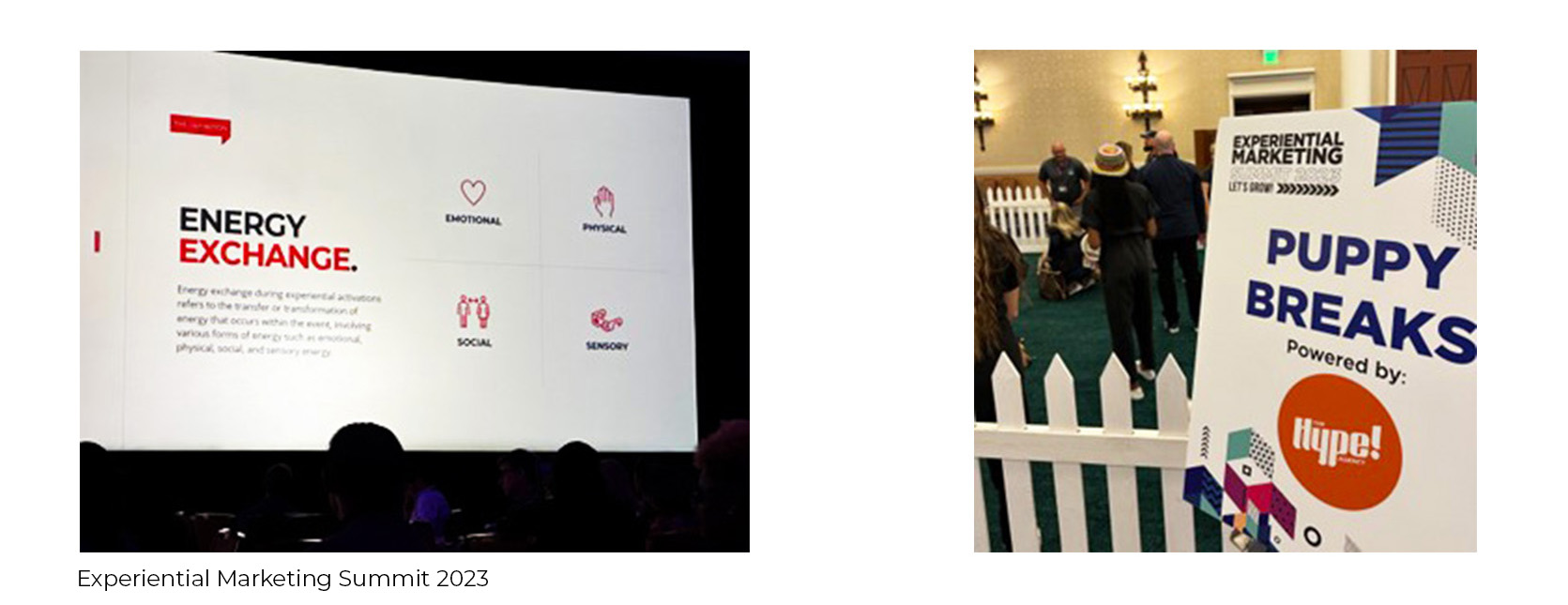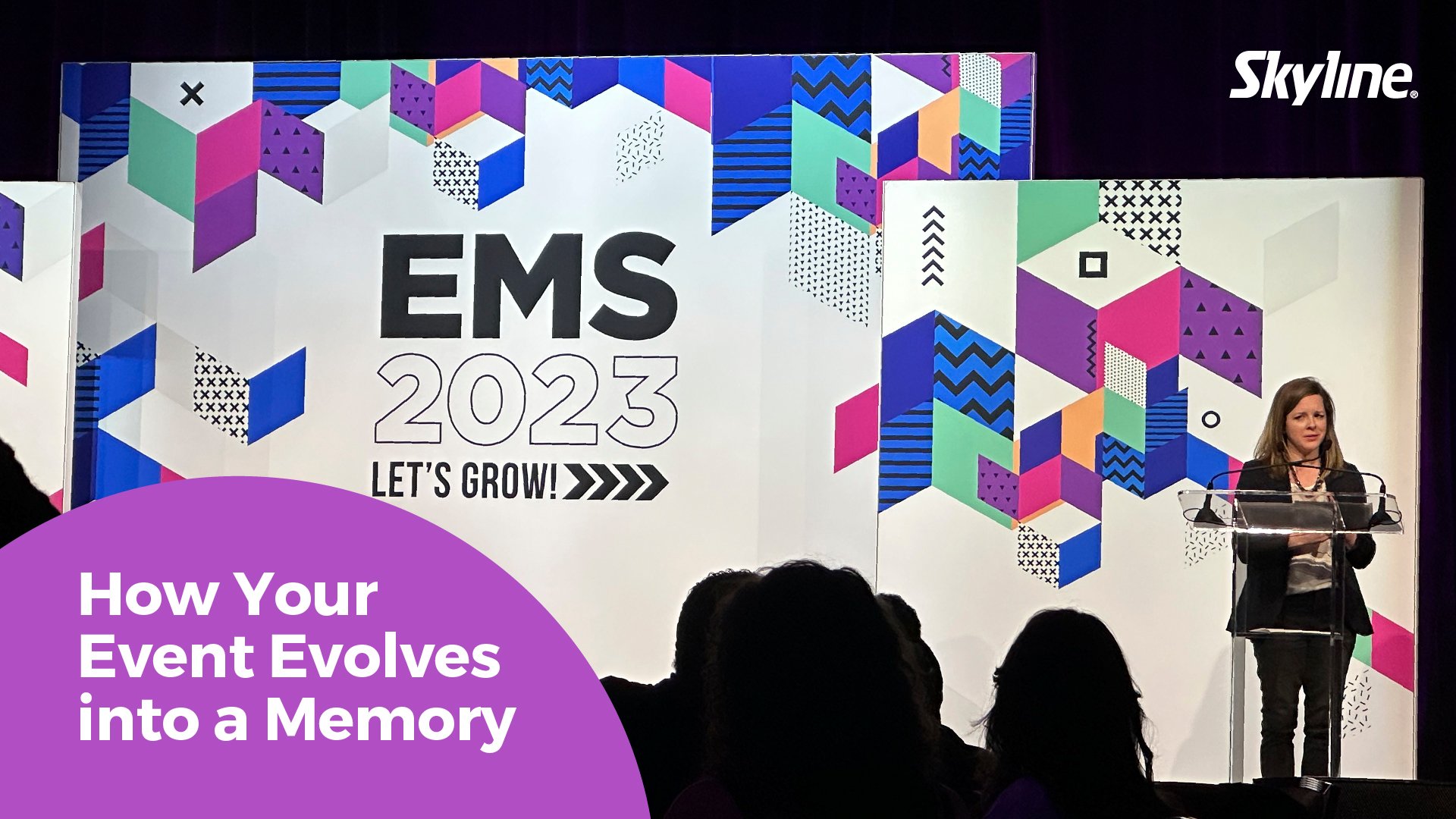How Your Event Evolves into a Memory
After a full week of information and data at the Experiential Marketing Summit (EMS) 2023 in Las Vegas, I came back with an enhanced perspective on creating powerful, immersive experiences with the help of digital.
Experience Before Technology
When speaking with our clients at Skyline Exhibits and BrandSync events, I begin by discovering the goal of their event, trade show, or activation. As much as I love talking about technology, my team and I start with a more strategic approach when planning a digital activation. First, let’s talk about the experience. What will the attendee feel? What do we want them to remember? What will keep them interested? Remember that experiences become memories, good or bad. And when your audience leaves your space, they will only remember how they felt. We, as humans, remember how we feel in specific spaces, in our experiences, and around the people we interact with. It’s the main takeaway in life. This emotion applies to marketing and how to market your activations - it’s nostalgia. Tap into the power of nostalgia for your creative process.
Whenever we feel nostalgic, our bodies remember how we felt at a certain point in time; something made us feel a certain way and we crave that comforting feeling of the past. A few examples from my life are the Jurassic Park movie release in 1993, Trapper Keepers in the 80s, the Ace of Base song in the 90s, Marty McFly’s DeLorean in Back to the Future, and the Mario Brothers Nintendo release. All these memories remind us of how we felt back then; the smells, the space, the technology, our clothes, who we loved, and our struggles. These nostalgic moments are created by experiences, good and bad, and remain etched in our brains, even our subconscious when dreaming.
When planning an event, think of what you want your audience to remember. Ask yourself, “How will my audience feel tomorrow, in a week, a month, a year or, hopefully, in ten years from attending my activation?” How do we want them to remember it, and more importantly, how will they feel about our brand, product, or service? It takes time to build loyalty to a brand, and multiple experiences and impressions in the physical and digital worlds will help with that, not only one experience.
Your experiential KPI (Key Performance Indicator) will be how people remember your company: KPI = Keep People Interested. Ask yourself, “How do I keep them interested and coming back?”

Web3 and Ecommerce Digital Experiences
The crypto market has been in a downturn since 2022. The novelty bubble burst with many of its fans moving on to more “stable” markets. However, many brands in web3 (decentralized web space for creators most commonly using crypto platforms as currency) were created in the past few years which rely on crypto, metaverses, and the NFT (Non-Fungible Token) markets.
Doodles, a very well-positioned NFT brand, was part of a presentation at EMS. They are changing from an NFT brand to an Experiential brand, which means they will continue rewarding their NFT holders, but instead call them Digital Collectibles. However, the company is now targeting people outside their collectibles' owners to experience the brand without having to spend anywhere from $7,000 to $20,000 on a token.
“Doodles now has Doodle Creators that allow users to create their own Doodle, owning the character and any merchandise that they can create from it” said Mackenzie Keast, Doodles Extended Experience. “New expression of digital natives is as important as it is IRL (in real life),” he added.

Audiences expect to experience brands in real life and in the metaverse. People and audiences want to create their own persona and brand in all realities. It is as important in the digital world as IRL.
This is why companies in the NFT world, including Doodles, are creating semi-permanent experiences. With this new trend, they are launching the first IRL activation where people can engage and connect with their digital brand in person. People want to be the heroes in their stories, and bringing their digital self to any world gives them the opportunity to own the narrative.
When creating new experiences, ask yourself, “What is my role in this?” You are there to support the audience and help them create memories. If you can create a memory for someone at your event or exhibit then you have succeeded, and people will remember your brand.
I am going back to my original point. People will remember your brand with a repetition of activations digitally and IRL, and companies are paying particular attention to bringing attendees to all possible worlds to experience their brands. Ask yourself, “How will someone remember my brand?” Put yourself in their shoes, understand your market segmentation, and create experiences that create good memories. Remember, digital can enhance these experiences, but it’s essential to start with strategy and creativity, then tap into nostalgia, to make experiences relevant to the user. Technology will come second to support your story.
All trademarks displayed in this article are the property of their respective owners.




